The evolution in the banking industry due to technology has become a “core competency” to meet the potential presented by technology. The banking technology is just not about attention to revenue or cost-saving but also user or customer experiences. Banking technologies include “Robotic Process Automation, Artificial intelligence, prescriptive security, Instant payments, and Moreover 25 largest institute has been doing Robotic Automation Process and few financial tools which are AI-based, significantly from last year. These AI-based technologies include machine learning & chatbots. However, the amount of percentage deployed chatbots that tripled in two years is like 6% in 2020 rising to 18% in 2020.
Banks jumping to Crypto Bus, yes it is found in research by Cornerstone’s consumer that Americans have been getting into some digital currency called as cryptocurrency, cryptocurrencies are born out in past few months for making secure communication, money online and information among the users and developers.
The first cryptocurrency developed in 2009 was “bitcoin” whose existing price in today’s world is $ 34,251.00. Bitcoin was first accepted as legal tender by El Salvador. The state of cryptocurrency is maintained by distributed consensus.
Due to the global increase in a pandemic in the past years the culture of physical banking has been eliminated by the users as well as innovators who demand the setup of digitalization of banking services. The river of digitalization in the banking industry has been crossed with technologies and advanced analytic algorithms.
Recently the Association of Southeast Asian Nations has come across the e-wallet battle about traditional bank vs fintech companies. Furthermore, fintech companies have seen to be more popular in demand since last year, it promises customers to provide easier access to finance and banking. In the countries like Indonesia, Malaysia, and Thailand the impact of e-money has grown despite covid -19 impacts on the economy.
Loyalty works like a bridge between the customer and banker. That’s why it is formatted that money is like toothpaste easy to take out and hard to put back. Customer loyalty is always at risk due to growing high expenses and decrement in incomes. In this durable transformation, it is found that banks have been paying efforts to provide easy service to the customers. Also, the customer’s journey has been improved at a scale level. To increase more growth in customers response bankers must create awareness of digital service in urban areas. Global banks must keep customers’ choices to be the highest priority. Additionally, the structured model has prepared to find customers’ viewpoints and approach towards the improvement process.
“At 2030, I would say that you probably have two billion people that’ll be using day-to-day banking service, independents of banks,” said Brett King. That’s the only objective of tools and technology used in the bank to provide security of independence and confidence to maintain a healthy relationship with customers.









